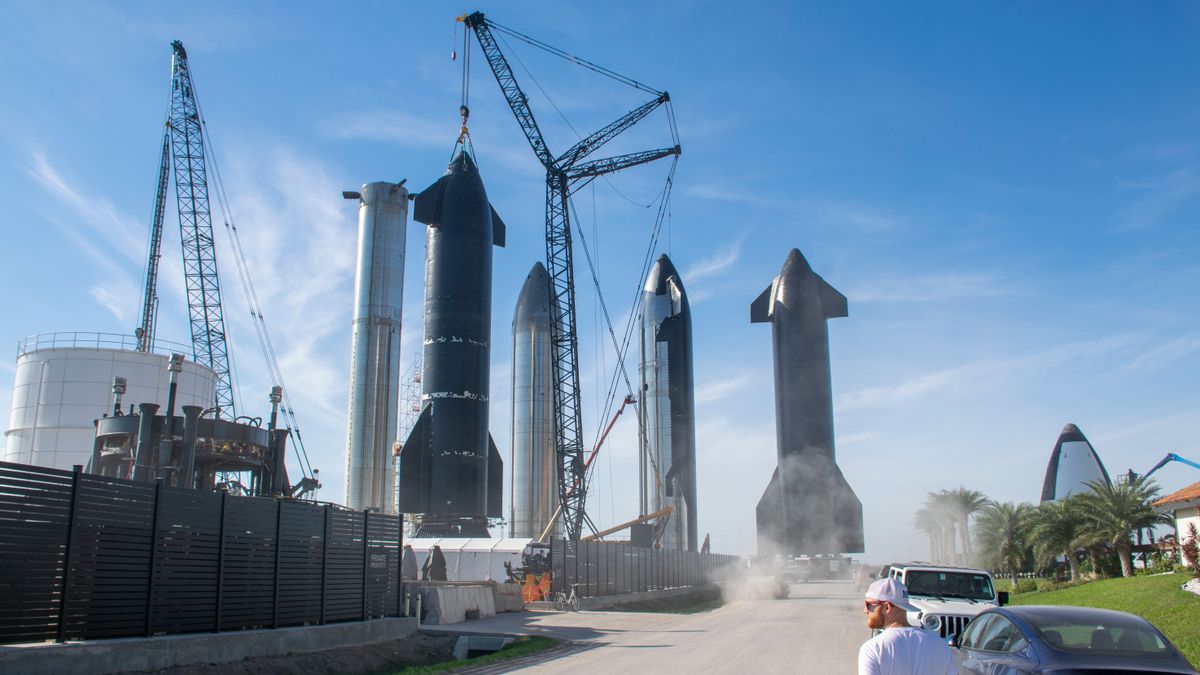ARTICLE AD BOX
 An SES O3b mPower medium Earth orbit gateway in Greece. Credit: SES
An SES O3b mPower medium Earth orbit gateway in Greece. Credit: SES
TAMPA, Fla. — European regulators have launched a preliminary investigation into Luxembourg satellite fleet operator SES’ multi-billion-dollar plan to buy U.S.-based rival Intelsat.
The European Commission set a June 10 deadline to decide whether to clear the deal with or without conditions, or open a full-scale, potentially four-month-long probe into any serious concerns about its effects on competition.
SES CEO Adel Al-Saleh told analysts during the company’s April 30 earnings call that the operator anticipates closing the transaction early in a previously forecasted window of the second half of 2025.
The United Kingdom’s Competition and Markets Authority (CMA) started reviewing the deal earlier this month, setting a June 12 deadline for its initial investigation.
The CMA could also choose to initiate a more detailed analysis of the merger, which John Worthy, a partner at law firm Fieldfisher, said is typically concluded within 24 weeks but may be extended by up to eight more weeks.
“In that case, the timeline for closing could extend to late 2025/early 2026,” he said via email.
The transaction requires clearances across multiple jurisdictions due to the global scale of both businesses, which combined would operate more than 100 geostationary and 26 medium Earth orbit (MEO) satellites.
Together, the companies also plan to deploy an additional eight geostationary and seven MEO satellites before the end of 2026, significantly expanding capacity to take on growing broadband competition from SpaceX’s Starlink network in low Earth orbit (LEO).
Al-Saleh said during the earnings call that the merger had already cleared smaller regulatory approvals in countries such as Brazil.
However, he listed the European Commission and CMA as among the most significant remaining reviews, along with the Federal Communications Commission and Department of Justice in the United States.
Regulators are likely to examine whether the merger could lessen competition in areas where SES and Intelsat have complementary or overlapping capabilities, such as government and mobility services, where both serve mission-critical customers, as well as in fixed data markets that support telecom and cloud integration.
More financial details
In an F-4 regulatory filing submitted April 29 to the U.S. Securities and Exchange Commission, SES estimated a 3.5 billion euro ($4 billion) cost for the acquisition, made up of 3 billion euros in cash and 531 million euros in contingent payments, tied to the potential monetization of Intelsat’s C-band spectrum.
SES also said the combined company would have generated 3.7 billion euros in revenue in 2024 and 1.8 billion euros in adjusted EBITDA — or earnings before interest, taxes, depreciation, and amortization — on a pro forma basis.
The operators have previously estimated 2.4 billion euros in synergies from their combination, including savings from optimizing their combined fleets and ground infrastructure, with 70% achievable within three years of closing the deal.
“The Combined Group is expected to be a stronger multi-orbit operator better able to compete in a fast-moving communications landscape and respond to the evolution of competing communications technologies,” SES said in the F-4 filing, “such as new and rapidly emerging non-GEO satellite constellations from well-funded LEO satellite providers and greater commoditization of satellite capacity and connectivity.”
The need to counter growing competition from Starlink and other upcoming LEO operators contributed to the approvals regulators gave U.S.-based Viasat in 2023 to buy British peer Inmarsat.
Despite launching lengthy in-depth investigations into Viasat’s acquisition, the European Commission and CMA both said new entrants were likely to exert sufficient competitive pressure on the merged group in markets such as inflight connectivity.
SES results
Publicly listed SES’ acquisition of its privately held rival comes as declines in the Luxembourg-based company’s legacy media business continue to weigh on its financials.
Media revenues fell 10.6% year-on-year to 206 million euros for the three months to the end of March, when adjusted for foreign exchange rates, impacted by the bankruptcy of Brazilian customer Oi.
In contrast, revenues from its networks business rose 8.4% to 302 million euros, driven by strong demand for mobility and government services.
French satellite fleet operator Eutelsat also recently reported continued declines in its broadcast segment alongside growth in connectivity services, reflecting the industry’s broader shift away from legacy media and toward data-centric applications.
Total SES revenues for the first quarter of 2025 slipped 0.5% to 509 million euros, and adjusted EBITDA fell nearly 1% to 280 million euros.
Jason Rainbow writes about satellite telecom, finance and commercial markets for SpaceNews. He has spent more than a decade covering the global space industry as a business journalist. Previously, he was Group Editor-in-Chief for Finance Information Group,... More by Jason Rainbow

 13 hours ago
5
13 hours ago
5









 English (US) ·
English (US) ·